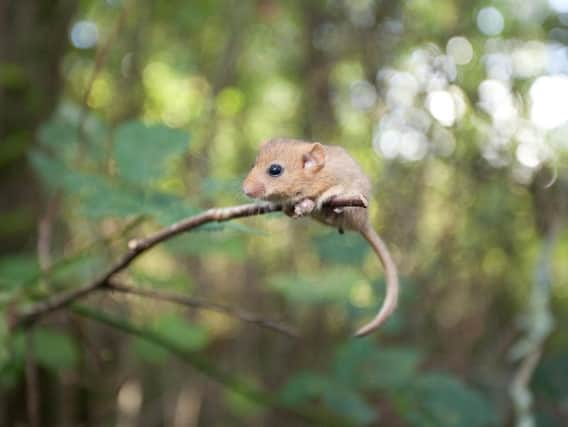Yorkshire working to protect dormice after 51 per cent plunge in population


The State of Britain’s Dormice 2019 document issued by the People’s Trust for Endangered Species (PTES) highlights a 51 per cent drop in numbers of the endangered mammal since 2000, with it completely vanishing from 17 counties across England. The report says dormice numbers have suffered from the loss of woodland and hedgerows, with a move away from traditional woodland management such coppicing and small-scale tree felling contributing to the loss and break-up of good quality habitat.
Ian White, dormouse and training officer at PTES, said: “The decline in dormouse numbers is due to the loss and fragmentation of their natural woodland and hedgerow habitats, as well as climate change.
Advertisement
Hide AdAdvertisement
Hide Ad“In particular, it’s the loss of habitat quality that’s of real concern.”
However he said although this latest report shows a severe decline has taken place over the last 18 years, the good news is that in some areas dormice are doing well. Areas like mid-Wensleydale where PTES has been working with the North Yorkshire Dales National Park to re-introduce the hazel dormouse to a habitat it was last seen in more than a century ago.
Mr White said records had shown dormice were found in Wensleydale in 1885 but became locally extinct after that.
Two small woodland sites near Aysgarth were the chosen for the re-introduction of breeding paris and trios in 2008 and again 2016. The programme has been a success with the dormouse gaining a foothold in the area. It received a further boost in 2017 when PTES and the Yorkshire Dales Millennium Fund provided funding for a three-year project to plant more than 1,859 yards (1,700 metres) of hedgerows. These would create a ‘dormouse highway’ linking the two woodland areas and third site nearby on the Bolton Castle Estate extending the dormouse habitat to a three mile wide patch.
Advertisement
Hide AdAdvertisement
Hide AdNow in its final year, Phill Hibbs, who was seconded from the Yorkshire Dales National Park Authority’s Trees and Woodlands team to take on a new role as Wensleydale Dormouse
Project Officer, said they were making connections and now they needed the dormice to find them.
“Dormice are arboreal creatures going from branch to branch and they do best in a shrub environment.”
Ian Court, Wildlife Conservation Officer on the project who oversees monitoring the dormice said they were now into the last tree planting season and there were good numbers of dormice in the reproduction sites.
Advertisement
Hide AdAdvertisement
Hide Ad“There is still work to be done and the hedgerows still need to grow but they will stop the woodlands being isolated sites.
“One of the problems has been isolation where a woodland is not maintained and there are no bridges for the dormice to use. Hopefully the bridges we have put in will lead to a bigger population over the wider area.”
Yorkshire is not the only site to have seen the reintroduction of hazel dormice. PTES has managed 30 reintroductions at 24 sites nationally over the past 26 years which has seen almost
1,000 captive bred dormice released to create new populations or boost existing ones.
Advertisement
Hide AdAdvertisement
Hide AdThe charity has been working with woodland managers providing training and guidance to help them manage woods for hazel dormice.
It has also launched the Great British Hedgerow Survey, asking farmers to assess their hedgerows.